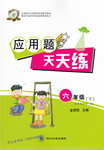阅读理解。
John lived with her mother when he was young. He didn't know who his father was. The woman did
some washing for the rich and could buy only some bread for her son. So the boy was short and thin.
One cold morning there was much snow in the streets. A car knocked the woman down and the
policemen took her to the hospital. She didn't tell John that his father deserted(遗弃) her before he was
born until she died. She left her son the name and address of his father.
John found his father, Mr. Brown, in another city. He was one of the richest shopkeepers and he had
to receive his son. From then on the boy lived a rich life. He ate all kinds of deliciou s food and wore
beautiful clothes. But he didn't go to school and could not read or write.
Once his father took him to a party, he saw a newspaper lying on the floor and picked it up while
others were talking about a film. He had a look at it and found a car's wheels were upward, he called
out, "Oh, dear! An accident happened!"
All the people were surprised and began to read the newspaper. But soon they all began to laugh. Do
you know why?
1. John didn't know his father because ____________.
A. the man was rich
B. the man deserted his mother
C. his mother left the man
D. the man didn't like him
2. John was short and thin because ______________.
A. he didn't like sports
B. his parents were short too
C. he was often hungry when he was young
D. his mother never gave him food
3. The woman told John who his father was ______________.
A. after she was knocked down by a car
B. before her son left
C. before she was in hospital
D. before she died
4. After John found his father, __________.
A. he was angry with the man
B. he started a rich life
C. he wouldn't live with him
D. the man was bad to him
5. The people at the party laughed at him because____________.
A. he held the newspaper upside down
B. he wasn't polite
C. the newspaper was yesterday's
D. he wasn't clever

 应用题天天练四川大学出版社系列答案
应用题天天练四川大学出版社系列答案